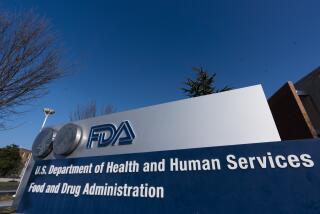Unscrambling Lou Gehrig’s Disease Gene : Research: The latest finding shows it causes the illness. Now, scientists are seeking to figure out how it acts to learn about what causes the non-inherited version of the crippling disease.
NEW YORK — When scientists announced in 1993 that they had identified a flawed gene that causes Lou Gehrig’s disease, they faced a critical question: Is it a saboteur or a loafer?
More precisely, does the gene cause the disease by actively making trouble or by simply failing to do its normal job?
It wasn’t just an academic issue. If the gene was failing to provide the body with a crucial protein, maybe a medicine could supply the protein instead. In fact, since the gene normally produces a substance that detoxifies harmful oxygen-free radicals, the finding suggested that taking other “antioxidants” might help treat the disease.
But now the scientific verdict is in: The gene is a saboteur. So the notion of simply replacing a missing antioxidant is out the window. And scientists are scrambling to figure out just how the flawed gene causes trouble.
The gene itself actually accounts for only about 2% of the nation’s 5,000 new cases per year of the disease, often called Lou Gehrig’s disease for the New York Yankee who died of it in 1941. In fact, only 10% of cases appear to come from inheriting any single flawed gene.
But scientists hope that learning how the recently discovered gene causes trouble will help reveal what causes the far more common non-inherited version.
The disease is formally called amyotrophic lateral sclerosis, or ALS. In this illness, nerve cells that control movement deteriorate and cause progressive paralysis. ALS usually strikes between ages 40 and 60, generally killing within three to five years.
In 1993, researchers announced that some inherited cases were caused by flaws in the gene that tells the body how to make a protein called copper-zinc superoxide dismutase, or SOD1. More than 35 disease-causing flaws are now known in this gene.
But how do they cause ALS? It’s a mystery, but scientists have taken some first steps toward finding out, says Dr. Robert Brown of Massachusetts General Hospital, one of the scientists who made the 1993 announcement.
A key finding is that the problem is not a lack of normal SOD1 protein, he said. So the question is what the mutant protein is actively doing to cause disease.
One possibility is that it is unusually susceptible to a particular misbehavior, putting chemical tags on other proteins that should not have them, said Joe Beckman, a professor of anesthesiology at the University of Alabama at Birmingham.
Those tags might keep those proteins from doing their jobs, crippling the nerve cells and causing ALS, he said.
Even normal SOD1 occasionally tags other proteins if it is exposed to unusually high levels of a substance called nitric oxide, he said. In fact, Beckman suspects ALS in general may be caused by overproduction of nitric oxide. The mutant SOD1 protein may just start misbehaving in response to a lower level of nitric oxide than regular SOD1 does, he said.
Beckman said he has evidence that mutant SOD1 protein puts tags on a protein that normally doesn’t have them, and which appears to play a key role in nerves that control muscle. He declined to discuss details of the work, saying it had not yet been accepted for publication in a scientific journal.
There are other proposals for how the flawed protein misbehaves. Brown said he is interested in the possibility that the mutant protein clumps together abnormally, somehow poisoning nerve cells. Or maybe the mutant protein lets its copper and zinc atoms escape, and it’s the metals that are toxic.
So what does all this mean for finding a new treatment?
Brown is optimistic, saying each new hypothesis raises its own new ideas for therapy. Scientists have created mice that show an ALS-like disease, which should allow for rapid testing of possible treatments, he said.
But until researchers find out how the flawed gene causes ALS, he admits, “we probably are not going to be too far ahead in treating the illness.”






